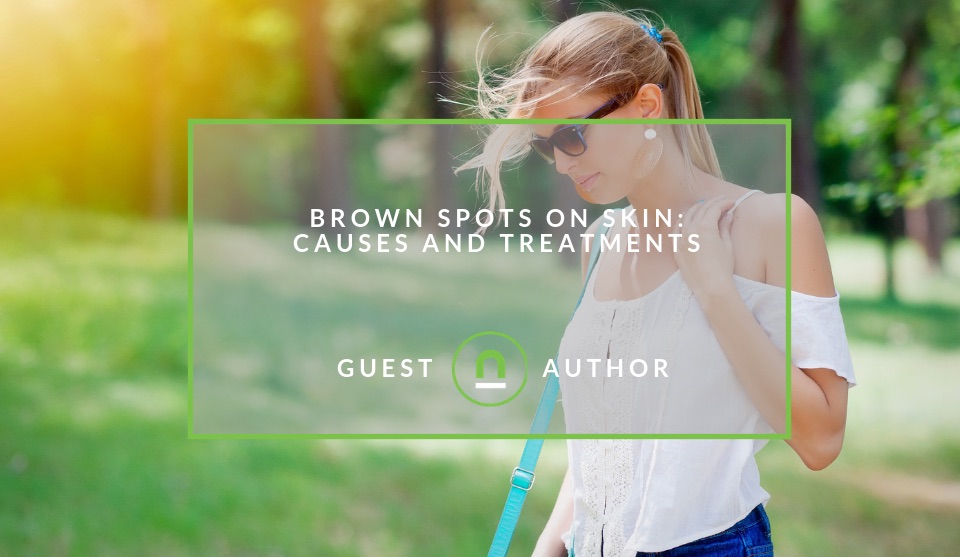Recent posts

Money Talks
Everything You Need to Know About SASSA Status Check
13 April 2025

Mind, Body & Soul
The Genetic Diversity of Cannabis Seeds
12 April 2025

Money Talks
How Small Businesses Can Leverage Blockchain Technology
02 April 2025

Industry Experts
Mastering Personalization in Digital Marketing
31 March 2025
Popular posts
Extravaganza
Trending Music Hashtags To Get Your Posts Noticed
24 August 2018
Geek Chic
How To Fix iPhone/iPad Only Charging In Certain Positions
05 July 2020
Extravaganza
Trending Wedding Hashtags To Get Your Posts Noticed
18 September 2018
Money Talks
How To Find Coupons & Vouchers Online In South Africa
28 March 2019
Brown Spots on Skin: Causes and Treatments
18 June 2019 | 3 comments | Posted by Amy Mia Goldsmith in Beauty Basics
During your lifetime, your skin will face many changes, regardless of the type and colour. One of the most common changes that happen to both light and dark-skinned people is hyperpigmentation or discolouration. This is at times a reason for discomfort and self-consciousness; however, you should be aware that effective solutions do exist, you just need to find the best for you.
What is hyperpigmentation?
Hypopigmentation is a process during which your skin gets darker in some places, and it is caused by external factors. Sun exposure is the main reason for this change because it boosts the production of melanin that builds up on the surface of your skin, causing sunspots. It mostly affects older people because the hyperpigmentation develops after years of prolonged sun exposure, although younger persons can experience it as well.
Causes of hyperpigmentation
As we already mentioned, the most common reason for hyperpigmentation is prolonged sun exposure. Sunspots appear because your body tries to protect you from harmful rays, thus creating more melanin which accumulates on the surface of your skin. Another common reason is skin inflammation whether because of acne, scarring or lupus, which is a bit more serious. This type of hyperpigmentation is more likely to happen to dark-skinned people.
Not every discolouration or darkening of the skin appears as a sunspot. Hyperpigmentation can be caused by internal factors as well. Hormonal changes and disbalance is the commonest one, and in that case, we are talking about melasma.
Melasma can also appear because of prolonged sun exposure, however, you can distinguish it from simple hyperpigmentation because it appears above the upper lip and on the cheeks and forehead. Some medical conditions such as Addison’s disease can also cause it, and you will recognize it by discolouration on knuckles, elbows, and knees.
Treatments of hyperpigmentation
Now that we have covered the basics, here comes the part everyone wants to know about. How to treat this condition? There are many treatments for hyperpigmentation that include medical procedures and others where you can use creams and lotions. Of course, it depends on the type of hyperpigmentation, but you should always start with non-invasive treatments for sun spots which would, in this case, include use of creams and lotions.
When picking a cream, it wouldn’t be a bad idea to consult your doctor.
However, you should know the ingredients that every such cream has to have. Some of those are niacinamide, vitamin C, alpha hydroxy acid (AHA), most importantly glycolic acid, retinoids, and hydroquinone. Niacinamides have vitamin B in them, which is important for collagen production and water retention.
This way, your skin will be less prone to scaring, thus lessening the chances for hyperpigmentation. Vitamin C reduces dark colouration of the skin and dull complexion leaving your skin looking fresh and radiant. Perhaps the most important ingredient is glycolic acid which is an AHA.
The role of glycolic acid is to exfoliate the skin removing the dead cells from the surface. With this, it helps with removing those cells easier, and it reveals new, healthy skin underneath. By peeling the problematic area, it can even fade some of the hyperpigmentation. Retinoids are made from vitamin A, which is important in skin care of ageing skin.
Retinoids are a good solution if your hyperpigmentation is caused by acne because they penetrate into deep layers of the skin and they work their magic there. Hydroquinone lessens the production of melanin and lightens the area of hyperpigmentation. To avoid lightening your skin on the rest of the face, use it in a thicker layer on the actual spot, and then spread it out.
On the other hand, if your hyperpigmentation is more serious, you can try procedures such as chemical peels, microdermabrasion, or laser treatments. Chemical peels are used to exfoliate the surface of your skin, making it look healthy, fresh and shiny. Continuous treatments can help collagen production and reduce the appearance of dark patches. Before doing any chemical peel, consult your dermatologist because it may be too harsh on your skin.
Microdermabrasion doesn’t require recovery time, unlike chemical peels because it practically sands away the dead cells from your skin without injuring the tissue. Laser treatment is the most effective of all treatments.
It uses intense pulse light to break up the pigment in your skin and treat hyperpigmentation. It can also cause lightening of the surrounding skin, so make sure you do this treatment with a professional who is going to watch out for that. Dark spots are not the reason you should lose your confidence; however, it is good to know your options and how to deal with it if you want.
Hopefully, this guide was able to explain about hyperpigmentation a bit better and help you figure out which treatment would be best for you.
About the author
Amy Mia Goldsmith is a blogger in love with fashion, beauty, and style. Writing is yet another of her passions. That is why she considers herself lucky to be able to combine all of her passions into lovely blog posts. Apart from writing, she invests her time into reading, learning, working out and travelling. She surrounds herself with people who are curious, passionate, happy and completely in love with life!
Tell us your story
Would you like to write for nichemarket just like Amy has? Find out how to submit a guest post and when you're ready, you can contact us.
Are you looking to promote your business?
South African beauty businesses can create your free business listing on nichemarket. The more information you provide about your business, the easier it will be for your customers to find you online.
Registering with nichemarket is easy; all you will need to do is head over to our sign up form and follow the instructions. If you require a more detailed guide on how to create your profile or your listing, then we highly recommend you check out the following articles.
Recommended reading
If you enjoyed this post and have time to spare why not check out these related posts and dive deeper down the rabbit hole that is beauty treatment and skin care.
Tags: beauty tips, guest post
You might also like
What Are Relational Database Management Systems?
28 March 2025
Posted by Che Kohler in nichemarket Advice
Learn what relational database management systems are, how they organize data using tables and relationships, and why they remain essential for busin...
Read moreThe Genetic Diversity of Cannabis Seeds
12 April 2025
Posted by Alina Jones in Mind, Body & Soul
A look into the South African heritage of cannabis growing and how the country has taken the plant in terms of growing it into a viable industry & th...
Read more{{comment.sUserName}}
{{comment.iDayLastEdit}} day ago
{{comment.iDayLastEdit}} days ago
 {{blogcategory.sCategoryName}}
{{blogcategory.sCategoryName}}

